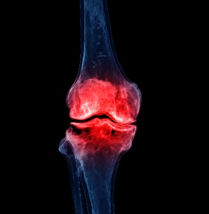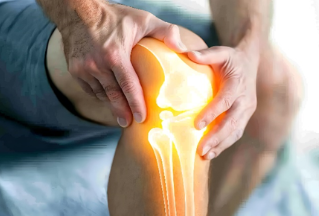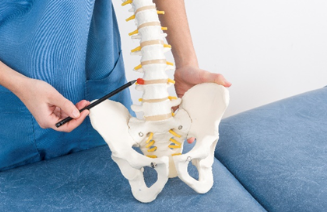Expert Orthopaedic & Trauma Care | Spine, Sports, Hand, Foot & Paediatric Specialists

Orthopaedics – Expert Care for Bones & Joints in Penang
Let us keep you moving
Orthopaedics is the branch of medicine that focuses on your musculoskeletal system - the
complex network of bones, joints, muscles, ligaments, and tendons that keeps you active and
mobile. Our orthopaedic surgeons specialise in diagnosing and treating a wide range of
conditions, including:
- Musculoskeletal trauma
- Spine conditions
- Sports injuries
- Degenerative diseases
- Infections
- Tumours
- Congenital disorders
The Backbone of Health
With orthopaedics being one of our centres of excellence, we adopt a holistic approach in
attending to your musculoskeletal treatments. Whether it is a spinal disorder, sports injury, or
musculoskeletal condition, the orthopaedic specialists at Gleneagles Hospital Penang provide
expert care in spine, sports medicine, hand, foot & ankle, and paediatric orthopaedics. Our
personalised treatments help you recover fully and regain mobility.
Gleneagles Hospital Penang is a leading orthopaedic practice in Malaysia and is home to one of
the largest teams of highly skilled and experienced orthopaedic specialists, who possess
different sub-specialties.
Our Comprehensive Approach
A. Multidisciplinary Care
We bring together experts from various fields to ensure the best possible outcomes:
Advanced Imaging Services
Our state-of-the-art imaging department, featuring 3T MRI and 640-slice CT technology, works seamlessly with our expert subspecialists to provide precise musculoskeletal diagnoses.
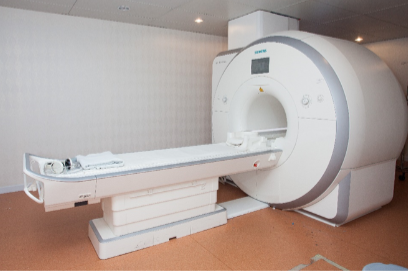
Comprehensive Rehabilitation
Well-equipped Rehabilitation Centre with rehabilitation specialists who work in close collaboration with surgeons.

Emergency & Critical Care Support
Well-trained emergency specialists and highly sophisticated cardiac centre, ICU & CCU to cater to any emergency.

B. Excellence in Minimally Invasive Surgery (MIS)
- Specialised keyhole surgery techniques
- Two dedicated Digital Operating Rooms
- Latest camera systems for optimal surgical precision
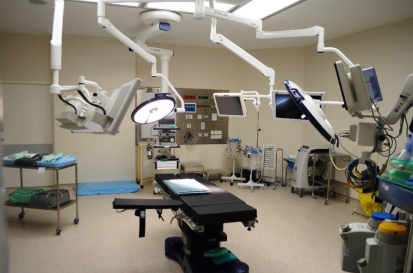
C. Cutting-Edge Technology
At the forefront of medical innovation, we deliver world-class patient care through advanced technological capabilities. We leverage minimally invasive robotic-assisted technology to provide exceptional medical treatment and optimal patient outcomes.
D. Commitment to Continuous Learning
- Ongoing staff training programs
- Knowledge sharing initiatives
- Professional development opportunities
E. Subspecialty Development
We believe in developing our subspecialty services to ensure competency in the care rendered.
Our Subspecialty Services
The following subspecialty care is available in Gleneagles Hospital Penang:
Expert hand surgeons at Gleneagles Hospital Penang provide comprehensive care for hand and wrist conditions. They utilize precise microsurgical and minimally invasive techniques for optimal patient outcomes.
Conditions Treated by Our Hand Surgeons
Common Hand Conditions:
- Carpal tunnel syndrome
- Cubital tunnel syndrome
- Trigger fingers
- De Quervain's tenosynovitis
- Ganglion cysts
- Hand infections
Advanced Conditions:
- Hand and wrist arthritis
- Hand tumours
- Complex wrist trauma and disorders
- Congenital hand anomalies
Our Hand and Wrist Treatments
- Minimally invasive hand & wrist surgery- Wrist arthroscopy
- Microsurgical finger reattachment
- Advanced carpal tunnel procedures
The team of expert Arthroplasty Surgeons, at Gleneagles Hospital Penang specialises in performing advanced knee and hip replacements. Our surgeons are adept at managing severe joint conditions, ensuring improved mobility and pain relief for patients.
Conditions Treated by Our Arthroplasty Surgeons
Knee Conditions:
- Knee arthritis
- Complex joint conditions
Hip Conditions:
- Hip arthritis
- Congenital hip dislocation
- Hip fractures
- Osteonecrosis
Our Joint Replacement Treatments
- Advanced joint replacement surgery
- Total Knee Replacement
A surgical procedure where diseased (arthritic) parts of joints especially with artificial joint components (prosthesis) are completely replaced with artificial (total) ones. This procedure can be used to replace knee joints which have been affected by a wide variety of conditions such as acute osteoarthritis, rheumatoid arthritis, haemophilia, gout and knee related injuries.
- Total Hip Replacement
If hips are affected by disease such as arthritis, parts of the joints can be replaced with artificial components. This surgical procedure helps to reduce and alleviate joint pain, improve range of motion and help the patient maintain an active lifestyle comfortably.
- Bone-conserving procedures
- Complex deformity correction
- Revision surgeries
- Specialised knee reconstruction
Our sports medicine physicians/surgeons specialise in arthroscopic treatments for injuries affecting shoulders, elbows, and knees, helping athletes achieve swift and effective recoveries.
Conditions Treated by Our Sport Medicine Physicians/Surgeons
Shoulders:
- Cuff tears
- Frozen shoulder
- Rotator cuff injury
- Shoulder dislocation (chronic)
- Shoulder instability
- Shoulder tendonitis
Elbow:
- Dislocation
- Golfer's elbow
- Tennis elbow
Knees:
- Anterior cruciate ligament (ACL) injury
The anterior cruciate ligament (ACL) is a critical ligament located in the centre of the knee joint, connecting the thigh bone (femur) to the shin bone (tibia). Its primary function is to provide stability to the knee by preventing excessive forward movement of the tibia and controlling rotational movements. ACL injuries are common, especially among athletes in sports that involve sudden stops, changes in direction, jumping, or direct contact, such as football and basketball. These injuries often occur when the knee is twisted or experiences a direct blow, and they can range from mild sprains to complete tears.
- Posterior cruciate ligament (PCL) injury
- Medial collateral ligament (MCL) injury
- Lateral collateral ligament (LCL) injury
- Meniscus tear / knocked knee chondromalacia patellae (CMP)
- Knee arthritis
- Knee bursitis
- Patella problems (knee cap)
Our Sports and Arthroscopic Treatments
- Arthroscopic shoulder stabilisation surgery
- Arthroscopic shoulder rotator cuff repair
- Elbow arthroscopy
- Arthroscopic anterior and posterior cruciate ligament reconstruction (ACL & PCL)
- Multi ligament reconstruction of the knee (MCL, LCL)
- Patella stabilisation surgery
- Knee osteotomies
- Revision ACL reconstruction
- Arthroscopic meniscus repair
- Cartilage repair
Led by expert foot and ankle surgeons, the team at Gleneagles Hospital Penang specialises in diagnosing and treating a wide range of foot and ankle conditions. Our surgeons are highly skilled in addressing both common and complex issues, ensuring the best outcomes for patients.
Conditions Treated by Our Foot and Ankle Surgeons
- Achilles tendonitis
- Arthritis
- Cartilage damage
- Diabetic foot problem
- Dislocation
- Fractures
- Gout
- Plantar fasciitis (foot pain)
- Sprains
- Tendonitis
Our Foot and Ankle Treatments
The expert food and ankle surgeons provide a range of advanced surgical and non-surgical treatments for conditions affecting the foot and ankle. These include:
- Plantar fasciitis foot surgery
- Achilles tendon repair and reconstruction
- Ankle arthroscopy
- Ankle ligament reconstruction surgery
- Ankle tendon repair and reconstructive surgery
- Correction of deformities
- Bunion corrections
Surgical intervention by our expert spine surgeons is recommended when conservative treatments fail to provide adequate relief or effectively manage the underlying spinal condition. Our approach prioritises minimally invasive surgical techniques designed to minimise tissue damage, reduce recovery time, and restore patient functionality as quickly as possible.
Conditions Treated by Our Spine Surgeons
- Degenerative spine condition
- Lumbar spinal stenosis
- Neck pain
- Nerve decompression
- Sciatica (pinched nerve)
- Scoliosis
- Slipped disc
- Spondylolisthesis (misaligned backbone)
Our Spinal Treatments
- Scoliosis surgery
- Disc replacement surgery
- Spinal fusion and disc surgery
- Spine tumour surgery
- Decompression Laminectomy / Laminotomy
- Corrective Spine Osteotomy
- Discectomy
At Gleneagles Hospital Penang, we advance the treatment of herniated spinal discs through advanced minimally invasive discectomy. This precision technique allows for targeted removal of disc material exerting pressure on nerves, using small incisions and specialised instruments. By minimising tissue damage and reducing post-operative pain, our approach accelerates patient recovery, offering a more refined alternative to traditional open surgery.
Trauma encompasses a wide range of injuries resulting from sudden physical force, such as accidents, falls, or violence. This can include soft tissue injuries like sprains and lacerations, as well as bone fractures, dislocations, and internal organ damage.
Conditions Treated by Our Trauma Surgeons
- Soft tissue and bone injuries of various parts of the body including dislocation and fractures.
Our Trauma Treatments
- Minimally invasive surgical techniques, including locking plate fixation and intramedullary nailing, to facilitate early functional recovery.
Our paediatric orthopaedic surgery sub-specialty represents a specialised and comprehensive approach to children's musculoskeletal care. We offer expert surgical interventions tailored specifically to the unique anatomical and developmental needs of young patients, providing advanced treatment options that are not available at many medical centres.
Conditions Treated by Paediatric Orthopaedics
- Bowing of the knee
- Clubfoot
- Greenstick fractures
- Growing pains
- In-toeing gait
- Limb length discrepancy
- Torticollis (wry neck)





